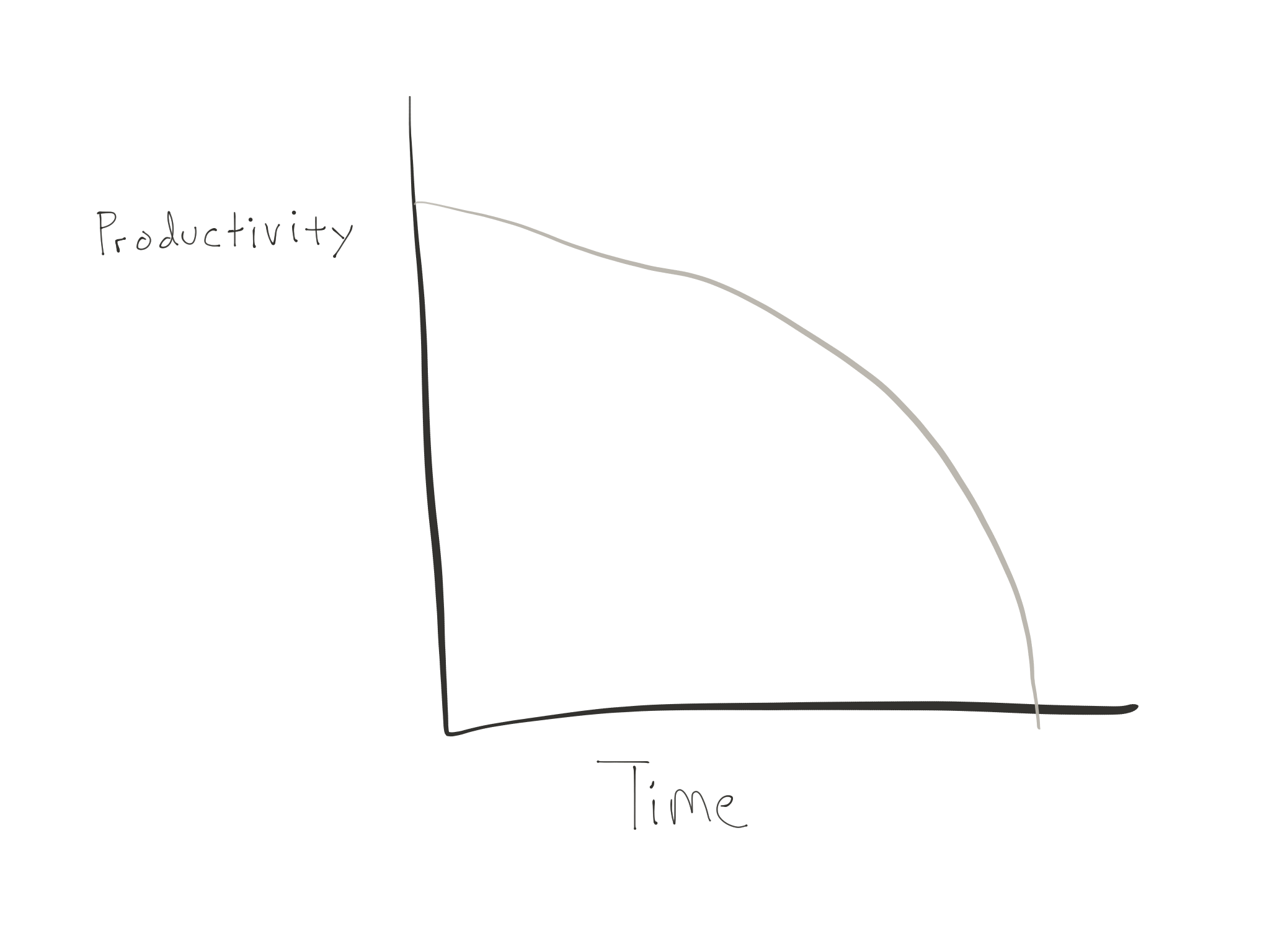Technical debt and technical investment
Technical debt
Technical debt is a tool for talking about trade-offs in software engineering. When you take on technical debt [1], you build something quick and dirty that will be harder to maintain or change down the line. The cost of maintaining the quick and dirty code or infrastructure is higher over time than if you had built it right the first time. You can tell this is true because I drew this scientific graph.

Some people use the phrase technical debt to mean bad code. That is not quite right. Technical debt is bad code for a reason. Sometimes you can get something done faster the wrong way, and sometimes getting it done faster is really important. When done correctly, you choose to take on debt when the benefit of speed outweighs the cost of maintaining or refactoring bad code.
Technical investment
The flip side to technical debt is technical investment [2]. With technical investment, you slow down now to speed up in the future. Maybe you switch programming languages or web frameworks. Your team takes time to learn the new tool, but if you chose wisely at some point they will be more productive. This is conclusively proven by the graph with no numbers on it that I drew by hand.

You need to invest
A successful product only gets more complex. If people like and use your product, you will add more features and complexity. Removing existing features that people pay money for or use basically never happens.
Tools and techniques that are productive in the initial prototyping phase sometimes struggle with the complexities of larger products. If you don’t invest to handle that complexity, development speed will slow down as complexity increases. Technical investment can scale your team’s productivity with the complexity of the product and the size of the team.
Risk
Technical debt and technical investment are both risky. If you underestimate the cost of maintaining some tech debt or the benefit of taking it on, your product slows down for no long term benefit. If you overestimate the value of a technical investment, you slow down in the short term without the long-term speed up.
What makes a good technical investment?
If you buy the idea of technical investment, the next question is “how do I know if something is a good investment?” The answer to this is probably about the same as in regular investing - you don’t. You can examine current evidence and try to predict future trends, but really it is all just guesswork.
This is hard in technology because we often expect to see immediate payoff, and discard things if we don’t. The history of computing is littered with good ideas cast off prematurely, but it is also strewn with bad ideas that stuck around for too long.
With those caveats in place, here are a few predictions for good technical investments for web development teams. I’m probably wrong about some of these.
Elm, or PureScript, or something like it
Statically typed purely functional programming is an old idea that has never quite caught on in mainstream programming. I think it is the way of the future, especially for client-side applications. Elm and PureScript are solving some of the culture and education problems that have prevented a language like this from gaining mainstream adoption, and I think one of them will gain a significant user base in the next few years.
Observables
This includes things like RxJS, frameworks built on observables like Cycle.js, and also the general practice of using observables to manage state and communication in a JavaScript application. I don’t think we’ve arrived at a good solution for managing state in client-side JavaScript. Observables seem like a good candidate for a better way.
Hiring and mentoring junior developers
I’ll probably write more about this, but the summary is that junior developers are wildly undervalued in a job market that is always desperate to hire. The team or company that works productively with junior developers and helps them grow in to senior developers will have a huge advantage in hiring.
Technical debt and technical investment
With technical debt you make a mess and clean up after yourself later. With technical investment, you clean up ahead of time so you can work more effectively later. Both can be used wisely, and both are necessary to maintain a healthy engineering organization and culture.
What do you think of the idea of technical investment? What do you think are some good technical investments?
[1]: The earliest reference I can find to the term technical debt is from Ward Cunningham in 1992. See http://c2.com/doc/oopsla92.html. Interestingly, the idea was articulated while Ward was working on a financial application. Sometimes we find good metaphors for software in totally unrelated domains. ⏎
[2]: I first heard about technical investment in a discussion a few months ago with Randal Bennet. ⏎